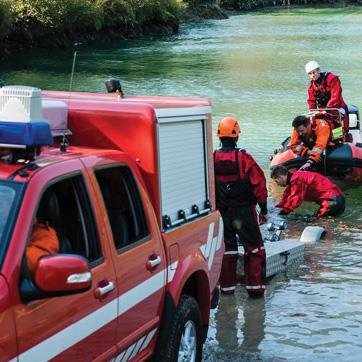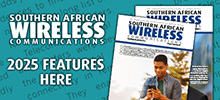13 May 2022


By James Trevelyan, senior vice president, enterprise and emerging markets at Speedcast
Working for non-governmental organisations (NGOs) can be dangerous. Charities operating across Africa dedicate themselves to saving lives and supporting communities, often amidst conflict zones, famines and epidemics. Despite travel restrictions brought about by the pandemic, 484 aid workers were victims of major attacks in 2020, according to a 2021 Humanitarian Outcomes report.
For volunteers to do their jobs effectively and safely, they need access to a reliable communications infrastructure. However, this is not always easy when charities are working in locations that are often beyond the reach of terrestrial networks. From satellite phones and cellular connections to emergency vehicle and personnel tracking, staying connected is critical for the safety of personnel. A satellite connection that enables communications and real-time Internet of Things (IoT) data transfer when in a rural or disaster-stricken area is key to making sure staff and people on the ground remain informed.
Satellite for safety of communications and crew
NGOs providing support across Africa deploy thousands of trucks every year to deliver humanitarian relief to those who are most in need. However, drivers are often targeted for their precious cargo of supplies and equipment. While some NGOs will provide communication devices, such as a satphone or a VHF radio, more can be done to ensure the secure communication of teams on the ground.
One global NGO, with operations in Africa, had long relied upon communications as a primary way of protecting drivers and crew, but the existing technology aboard its fleet of more than 3,500 trucks became outdated. To increase the safety of its drivers, the NGO upgraded the existing technology and improved it with advanced software and cloud services, resulting in enhanced tracking and real-time alert capabilities. Dual-mode satellite and cellular terminals were installed, transmitting GPS and key telematics data, to ensure that all crew members and cargo are monitored at all times. The software defaults to the cellular connection when service is available and switches to satellite service when it is not.
Owing to the highly sensitive information being transmitted, such as locations of staff and cargo, the NGO needed a secure line of communication between all IoT devices and the monitoring centre, which transfers all information to the operation’s headquarters. Communications are not just one way; a panic button allows the driver to alert headquarters without the knowledge of anyone else in the vehicle. Even in the most remote or dangerous areas of the world, drivers and crew are never alone and this could ultimately save lives.
For another international NGO operating across 35 sites in Africa, reliable connectivity was essential for the safety, welfare and quick communication between sites. Moreover, a dedicated network was needed to ensure complete control of the traffic, allowing them to prioritise certain communication applications for the effective transmission of information while on-the-job. IT crews were then able to monitor the network performance and re-delegate priority traffic to suit their ever-changing needs. Some members of the NGO were also trained to install VSAT, allowing them to install the systems across Sierra Leone during the Ebola outbreak.

Technology developments for saving lives
The adoption of IoT via satellite technology helps to further develop the safety and operational efficiency of NGO workers in urgent situations across remote and disaster-stricken areas. IoT allows for the monitoring of speed and heading, with geofencing features that trigger alarms if trucks depart from their assigned routes. They can monitor oil levels and water temperatures within vehicles and equipment, which are then relayed back to the central hub. IoT can deploy real-time warning signs, urging drivers to turn around if needed or ensure that their vehicle is repaired or replenished at the earliest opportunity. Without this technology, drivers could be left stranded, with invaluable cargo, in hostile environments.
The delivery of this information needs to be completely secure, as any leak of information or data breach could be detrimental to the lives of NGO staff. Many NGOs have also embraced cloud technologies to improve agility, speed up deployment and reduce hardware, server, IT labor and maintenance costs. Also, many cloud service providers are giving not-for-profit organizations free or discounted services as part of their Corporate Social Responsibility efforts. When a base camp needs to be set up or first responders need to be deployed, the teams need to be able to access critical information in real-time. Leveraging cloud-based services enable NGO workers to respond to situations more easily. However, fundamentally, the ability to use cloud services relies on highly available and secure connection. Therefore, when migrating to the cloud, NGOs must ensure that remote users have secure and reliable cloud access over any connectivity path.

Protection as technology develops
Satellite will continue to play an important role in providing connectivity, but development in technologies that can optimise satellite connectivity will also have a huge role to play. The use of IoT is already showing great benefits and as it is utilised further, it will continue to present more opportunities for safety and protection measures. Additionally, developments in remote network management, i.e. using cellular connectivity when available and automatically switching to satellite when necessary, will help to ensure a reliable connection while also maximising cost and bandwidth efficiencies. These systems will continue to require reliable, secure connectivity every step of the journey for NGOs and disaster relief efforts in the most rural areas of the world. Satellite will remain a vital lifeline for brave NGO workers, ensuring that they help as many people as possible.







